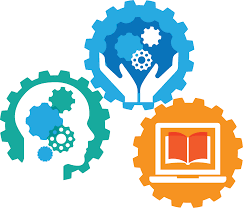
My reflection on the AASL standards:
As an experienced educator, I have always understood the importance of standards and their relevance to the educational success of my students. Throughout my MLIS educational process, I have learned the importance of the ALA-AASL standards and how they “are designed to guide your interactions with learners, educators, and stakeholders, as well as to help you to engage in deep, effective professional practice” (AASL, 2018, p 3). These standards are crucial to help guide us as librarians so that we are better equipped to meet the needs of all of our members of our library community.
Standard 1: Teaching For Learning
Due to my experience with teaching multiple grade levels, this standard comes naturally to me. I know the importance of collaborative planning, having knowledge of learners and learning styles, and designing and implementing instruction that engages students. My collaboration unit titled “Researching With Power” demonstrates my understanding of this standard because I worked in collaboration with both the school librarian and a 9th-grade teacher to create a unit that was based on student needs and their learning styles were made evident by the pre and post-assessment we implemented. The unit helped to meet student interests, while also instructing them in twenty-first-century skills and providing inquiry-based learning and research skills. My Pathfinder artifact also demonstrates my understanding of this standard by demonstrating my ability to work with other teachers to integrate twenty-first-century skills while simultaneously planning and implementing state curriculum.
Standard 2: Literacy and Reading
Promoting reading has always been my professional goal. I strongly agree with the statement that “Reading is the core of personal and academic competency” (AASL, 2018, p13). As a librarian, I am in an opportune position to help curate the love of reading for my school community. I believe my paired text and stakeholder’s presentation artifacts display my mastery of this standard the best. In my paired text artifact, I offered a variety of literature in multiple formats and also offered the students an opportunity to respect diversity by including a book that contained the diverse cultural and social needs of an African community. In my stakeholder’s presentation, I offered a program that centered on reading promotion and also contained different strategies to support reading for “information, reading for pleasure, and reading for lifelong learning” (ALA/AASL, 2010, p 6).
Standard 3: Information and Knowledge
Providing and promoting information and knowledge is about making sure your community has access to materials and can use them efficiently and effectively. To show mastery of this standard, a librarian should be able to identify and meet the needs of their community by implementing evidence-based authentic learning experiences. I believe my pathfinder and collaboration unit best demonstrate my mastery of this standard. My collaboration unit focuses on teaching ethical information-seeking behavior, supporting open access to the library’s services, and engaging learning experiences using digital and print resources. My pathfinder also provides students with a plethora of digital tools and facilitates students evaluating these resources, in addition to, communicating their learning.
Standard 4: Advocacy and Leadership
Advocacy and leadership are crucial parts of a librarian’s job. A librarian needs to be able to communicate and advocate for their programs in order to remain relevant in the school and community. By demonstrating how school libraries help students to be successful and achieve goals, librarians ensure that their library is a readily used tool in the building. I believe my letter to the editor and my stakeholder’s presentation best demonstrate my understanding of this standard. My letter to the editor encourages community members to support and visit school libraries and to learn about their collections and their programs that are helping learners. My stakeholder’s presentation communicates how a suggested program can enhance student learning and aid in school improvement efforts.
Standard 5: Program Management and Administration
I believe I have grown the most in my MLS studies with this standard because it is the one that differs the most from my educational background. Planning and implementing programs on a larger scale for the school community, as opposed to the smaller classroom scale, presented a learning experience for me that I really enjoyed. By mastering this standard, I was able to see how I could affect and influence my school community in a greater and more meaningful way. I believe my collection planning and my stakeholder’s presentation most exemplify my mastery of this standard. In my collection planning assignment, I was able to evaluate my library’s collection and apply best practices to evaluate where needs were and how to enhance the collection to better fit the needs of the school community. In my stakeholder’s presentation assignment, I was able to show my ability to collaborate with teachers, administration, and community members to create a program that would both engage learners and aid in the school and library’s mission.
References:
AASL. (2018) The national school library standards for learners, school librarians, and school libraries. Chicago, IL: ALA.
ALA/AASL. (2010). ALA/AASL standards for initial preparation of school librarians. Retrieved from https://www.ala.org/aasl/sites/ala.org.aasl/files/content/aasleducation/schoollibrary/2010_standards_with_rubrics_and_statements_1-31-11.pdf.
Image:
AASL. (2022). AASL standards framework [logo]. Retrieved from https://standards.aasl.org/framework/.